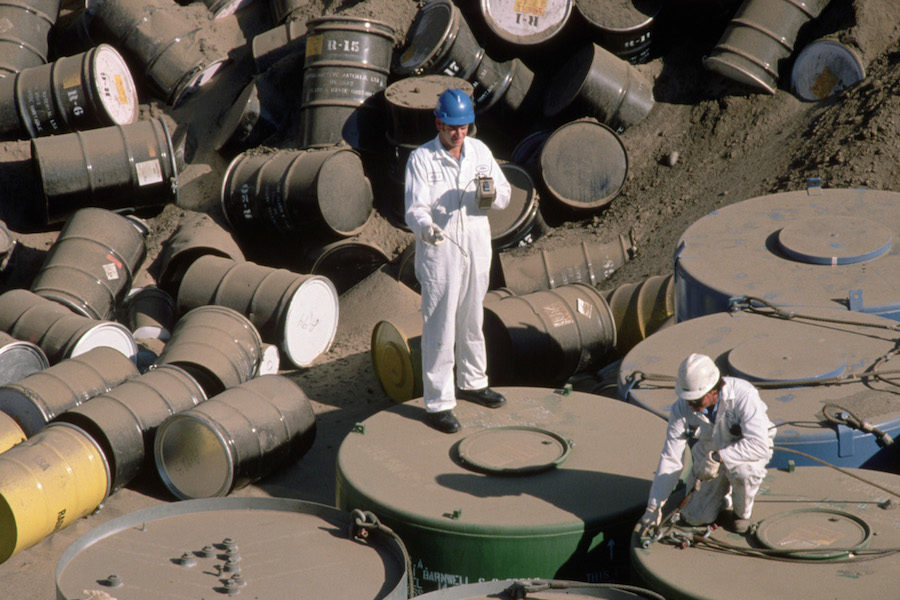On Tuesday an incident occurred at the the site. A sinkhole appeared above an old railroad tunnel which is full of radioactive equipment. Workers are now filling the hole with 50 truckloads of dirt. Officials claim that no release of chemicals or radioactivity occurred.
The old railroad tunnel at the side has been used to store radioactive machinery and fuel containers:
Railroad cars loaded with contaminated equipment were backed into the tunnel by a remotely operated engine and left there, with the door eventually sealed closed.The original tunnel offers little protection:
Radiation levels of wastes stored there would be lethal to humans within an hour, according to Heart of America Northwest, a Seattle-based Hanford watchdog group.
The tunnel was used from 1960 to 1965. In 1964 a longer and more reinforced tunnel was added at PUREX.
The rail tunnel was built in 1956 out of timber, concrete and steel, topped by 8 feet of dirt. It was 360 feet long (110 meters).Competent engineers built these tunnels.
Still, it is likely that problems with these tunnels will increase over time. They need immediate attention. Unfortunately not everyone is of that opinion:
[T]he Energy Department last year received permission to delay removing waste from the tunnels until 2042. The waste was supposed to be gone by 2024,Here are lists of the various loads (1, 2, 3) the railway cars in the tunnels are carrying. Some of them are radiating with up to 500 rem per hour.
Doses greater than 100 rem received over a short time period are likely to cause acute radiation syndrome (ARS), possibly leading to death within weeks if left untreated.Much lower doses, received over longer periods of time, will significantly increase the risk of cancer.
The tunnels and the radioactive machinery in them are not the only imminent problem at Hanford. The site also holds 200 million liters of radioactive waste stored in 177 double-walled concrete tanks, Some of these tanks, built underground 40 years ago, are leaking aggressive and radioactive chemicals.
As long as the waste stays in place at the Hanford site the immediate danger from it is only relevant to the nearby communities. But a large fire or a natural catastrophe could distribute highly radioactive particles over very large areas.
Tens of billions have been spent in research and pilot facilities to treat radioactive waste and to encapsulate it in glass. Finding final safe storage sites continues to be a problem. Real progress is still missing. Unless the societies decide to set the safe storage of radioactive waste as a priority it will take 50 or more years until the cleanups in Hanford and elsewhere are finished.
An international crash program could significantly shorten that time-span and remove the dangerous waste from various leaky storage sites all over the world. But unless there is some very large incident with significant casualties such a project is unlikely to begin.




Reader Comments
to our Newsletter